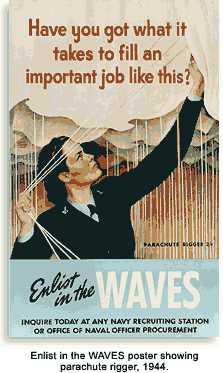Miami-Dade Military Museum
History of Women's Military Service
The Miami Dade Military Museum and Memorial is commemorating and encouraging the study, observance, and celebration of the vital role of women in American Military history by highlighting some of the amazing women and their service.
Loretta Walsh
Loretta Perfectus Walsh (April 22, 1896 – August 6, 1925) was the first woman allowed to serve in the United States Military in a non-nurse billet. Prior, women had served as nurses since 1901. Women, however, were treated different than men. They were not entitled to same pay or benefits and were not given rank or uniforms. Walsh broke the "glass ceiling" when she became the first woman to enlist in the U.S. Navy in 1917. Walsh enlisted just 12 days before President Woodrow Wilson declared war on Germany.
Subsequently, Chief Yeoman Walsh also became the first women to be promoted to U.S. Navy Petty Officer when she was sworn in as Chief Yeoman in March 1917. Her rank entitled her to the same benefit and pay as men, setting a new precedent in the U.S. military in promoting gender equality. Walsh was stationed at the Naval Shipyard in Philadelphia. Chief Yeoman Walsh was awarded the World War I Victory Medal.

Women's Army Corps
The Women’s Army Corps (WACs) of the U.S. Army was created by a law signed by President Franklin D. Roosevelt on July 1st , 1943. The WACs was converted from the Women’s Army Auxiliary Corps (WAAC) which had been created in 1942 but did not have official military status. New WAC recruits underwent four to six weeks of basic training, which included a physical training program, often followed by four to twelve weeks of specialist training. In November 1944, an all African American women drawn from the WAC, the Army Service Forces, and the Army Air Forces, was created and eventually designated as the 6888th Central Postal Directory Battalion, nicknamed “Six Triple Eight.”



6888TH U.S. Army Battalion
First Lady Eleanor Roosevelt and civil rights leader Dr. Mary McLeod Bethune successfully advocated for the admittance of African American women as enlisted personnel and officers in the WAC, although as in the rest of the Army, segregation prevailed.

With the war now at its bloody peak, mail was indispensable for morale, but delivering it had become a towering logistical challenge. The backlog, piled haphazardly in cavernous hangars, amounted to more than 17 million letters and packages addressed to Allied military personnel scattered across Europe.
The 6888th Central Postal Directory Battalion produced great results in Birmingham: With the new tracking system they created, the women processed an average of 65,000 pieces of mail per shift and cleared the six-month backlog of mail in three months. The women adhered to the motto of, “No mail, low morale,” providing essential support for the U.S. military in the European theater by linking servicemembers to their loved ones back home.
Cpl. Annie Braceful sorting mail

The Six Triple Eight and civilian postal employees sorting mail in France in November 1945, two months after the war ended. (Image Credit: National Archives)

Captain Adams drilling her company at the first WAAC training center in Fort Des Moines, Iowa, in 1943. (Image Credit: National Archives)

WAVES, acronym of Women Accepted for Volunteer Emergency Service, military unit, established on July 30, 1942, as the U.S. Navy’s corps of female members. During World War II some 100,000 WAVES served in a wide variety of capacities, ranging from performing essential clerical duties to serving as instructors for male pilots-in-training. Initially, they did not serve overseas. Several thousand WAVES also participated in the Korean War. The corps continued its separate existence until 1978.

Enlist in the WAVES poster showing parachute rigger, 1944.

Waves at Hollywood Beach Hotel 1943 in Hollywood, Florida.

Lieutenant (Junior Grade) Harriet Ida Pickens (left) and Ensign Frances Wills, the Navy's first African-American WAVES officers.


Marjory Stoneman Douglas, best known as an environmentalist and author of The River of Grass (1947), served in the United States Navy during World War I, from April 1917 to May 1918. Frank Bryant Stoneman, Marjory’s father and editor-in-chief of the Miami Herald, sent his daughter to cover the story of the first woman in the Miami area to enlist in the armed forces during World War I. Douglas was the first to arrive at the recruiting office, and became the very woman she was sent to report on. She later joined the Red Cross and traveled to Europe after the Great War.

Captain Rosemary B. Mariner (1953 ─ 24 January 2019) was the first woman to command an operational naval aviation squadron. She led VAQ-34 during Operation Desert Storm and retired as a captain in 1997 after 24 years of service.